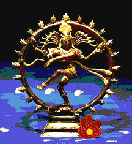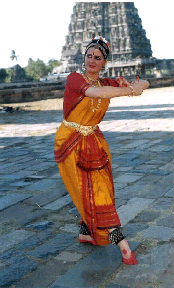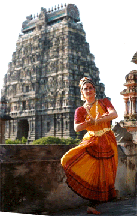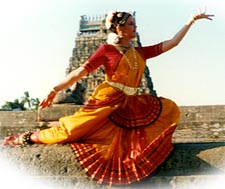Dec 25, 2025
Dec 25, 2025
 Classical dance in India differentiates itself from traditional Indian folk dances in that it is sanctioned by the extensive dance manual, the Natya Shashtra (a Sanskrit treatise written by the sage Bharata between the third and sixth century A.D.)
Classical dance in India differentiates itself from traditional Indian folk dances in that it is sanctioned by the extensive dance manual, the Natya Shashtra (a Sanskrit treatise written by the sage Bharata between the third and sixth century A.D.)
 Another clear difference is that Indian classical dance has its basis in classical Indian music and since both the dance and music were originally part of temple art and ritual, the lyric is mostly spiritual in content.
Another clear difference is that Indian classical dance has its basis in classical Indian music and since both the dance and music were originally part of temple art and ritual, the lyric is mostly spiritual in content.
Classical dance is also strongly connected with the legend of the cosmic dance of Lord Shiva Nataraja, the poetic description of which provides dancers with inspiration and visualization of this art form's ideal.
Many classical dancers make their annual pilgrimage to the temple city of Chidambaram, where the enshrined idol of Lord Nataraja, the King of Dance, resides.
 Bharata Natyam is one of the eight major classical dance forms, which originated in south India. It has three main aspects: Natya, the dramatic element where the dancer tells a story and expresses various sentiments using a very subtle facial expressions and hand gestures, Nritta, the abstract dance aspect where the choreography is complex, precise and often very rhythmic but with no symbolic meaning, and Nritya which employs both dance and drama to emphasize the meaning of the lyric and mood in the music.
Bharata Natyam is one of the eight major classical dance forms, which originated in south India. It has three main aspects: Natya, the dramatic element where the dancer tells a story and expresses various sentiments using a very subtle facial expressions and hand gestures, Nritta, the abstract dance aspect where the choreography is complex, precise and often very rhythmic but with no symbolic meaning, and Nritya which employs both dance and drama to emphasize the meaning of the lyric and mood in the music.
Bharata Natyam was at one time only performed by a community of women called Devdasis, which means 'servants of God'. These women were brought up by the temple, never married, and their life's sole purpose was to dance in honor of the temple's presiding Deity.
 Sculptures of these graceful dancers in their arabesque poses can be seen chiseled in the ancient temple walls and gateways, especially in the famous temple complexes in Tanjore and Chidambaram.
Sculptures of these graceful dancers in their arabesque poses can be seen chiseled in the ancient temple walls and gateways, especially in the famous temple complexes in Tanjore and Chidambaram.
Bharata Natyam dancers and their accompanying musicians now bring their depth and color to stages all over the world. They continue to win the awe and admiration of the international dance community as they display their footwork and ornate choreography to intricate rhythms and express India's religious poetry and music with expressive eyes and gestures.
Bharata Natyam asks its sincere practitioners no less than a lifetime of dedication, discipline, creativity and constant enquiry into the philosophical and artistic traditions that gave birth to it.
16-Mar-2001
More by : Sandhya Keller